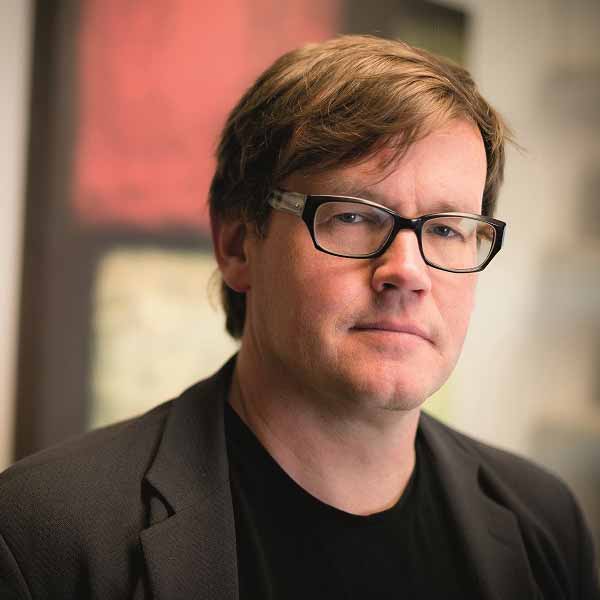Scientists Discover a New Signaling Pathway and Design a Novel Drug for Liver Fibrosis
Health & Behavior
A landmark accord was reached at the United Nations 2015 Paris Climate Conference. Now comes the difficult process of implementation. Countries must find ways to cut emissions that cause climate change, and then prepare to adapt directly to the large number of changes that will inevitably occur.

School of Global Policy and Strategy political scientist David G. Victor. Photos by Erik Jepsen/ University Communications
As countries grapple with the practical realities of the Paris process, they must also recognize that pollution has many distinct effects. For there is more to climate change than higher temperatures, say UC San Diego School of Global Policy and Strategy political scientist David G. Victor and Scripps Institution of Oceanography climate and atmospheric scientist Veerabhadran Ramanathan in the essay “The Next Front on Climate Change: How to Avoid a Dimmer, Drier World.”
Coauthored by Jessica Seddon, founder and managing director of the India-based Okapi Research and Advisory, the essay appears in the March/April 2016 issue of Foreign Affairs, available in print Feb. 23.
“Whereas greenhouse gas emissions will bring about relatively distant and diffuse danger, aerosols cause immediate and localized harm,” the authors write. “As states sharpen their pledges to reduce greenhouse gas emissions in the coming years, they should also make distinct pledges to cut aerosols.”
They explain how many of the pollutants that affect the climate also dim the planet. Some of these pollution particles — known as aerosols — reflect sunlight back to space. Others absorb sunlight before it reaches the Earth’s surface. Dimming has a profound effect on the water cycle, leading to decreased rainfall and even drought. In societies that depend heavily on agriculture, much of which is fed by natural rainfall, the result can be threats to food security and increased poverty.
“Many of the activities that cause greenhouse gas emissions … also yield ultra-small particles known as aerosols, which blanket vast areas in a haze that blocks and scatters sunlight,” the authors write. “By reducing the solar energy that reaches the earth’s surface, aerosols reduce evaporation and slow the water cycle that governs where, when, and how much rain falls.”

Scripps Institution of Oceanography climate and atmospheric scientist Veerabhadran Ramanathan.
Prevailing thought is that global warming will produce a wetter climate, yet Victor, Ramanathan and Seddon argue the opposite. They say an atmosphere “dimmed by aerosols” will actually be drastically drier than normal in key regions — areas that rely on rainfall the most: sub-Saharan Africa, China, North America and Asia. Following rapid industrialization in East and South Asia, for example, an increase in sulfur dioxide and black carbon in the region resulted in 10 to 15 percent less sunlight and a 7 percent decrease in average annual rainfall. The region is home to more than 1 billion people.
“For much of the world,” they write, “aerosol-induced dimming and drying are among the most immediate dangers posed by pollution.”
The authors recommend that the reduction of pollutant aerosols — diesel soot and black carbon, as well as sulfates and nitrates formed from fuel emissions — play a central role in nations’ environmental policies. They promote and outline three specific actions: pushing for cleaner and more efficient technology for energy production, tightening regulations on transportation systems, and reducing or eliminating using dirty fuel in households.
“Politically, the good news is that the changes in technology and practice needed to cut aerosol emissions are well known,” said Victor, author of “Global Warming Gridlock: Creating More Effective Strategies for Protecting the Planet.” Victor also heads the Laboratory on International Law and Regulation at the School of Global Policy and Strategy.
“Avoiding dimming, which requires big cuts in aerosol emissions, should be a high priority for policy makers,” Victor said. “Because these aerosol pollutants have short lifetimes in the atmosphere, politicians can quickly see the benefits from their efforts to control this kind of pollution.”
Ramanathan’s own research at Scripps over the past two decades has been a key source of data linking the dimming effect of aerosols to suppression of rainfall. Numerous model runs performed in the past three years have confirmed his observations, but this knowledge has been confined to the science community for the most part. Many policymakers have been inclined to see emissions of aerosols on a global scale as an inadvertent regulator of global warming, without considering how those emissions disrupt natural processes of evaporation at ground level. The essay, Ramanathan said, is an attempt to bring this knowledge to policymakers so it might inform national decisions on energy generation and public health.
“The focus to policymakers has been predominantly on the cooling effect of aerosols,” said Ramanathan. “What is even more important is the fact that the aerosol particles from pollution cut sunlight going to the ground drastically and reduces rainfall. If we remove the dimming effect by cutting down emissions of aerosols, there could be a huge benefit for water, particularly because the world’s population is going to increase to 9 billion by midcentury.”
With fast action, there is hope. The authors say pursuing policies outlined in the essay would not only “dramatically limit the risk of droughts and irregular monsoons,” but that the world’s leaders could reduce global dimming within an estimated 10-20 years. And by reducing global dimming, nations will help to make the world’s water supply more secure while bringing about huge global health benefits.
Keep up with all the latest from UC San Diego. Subscribe to the newsletter today.